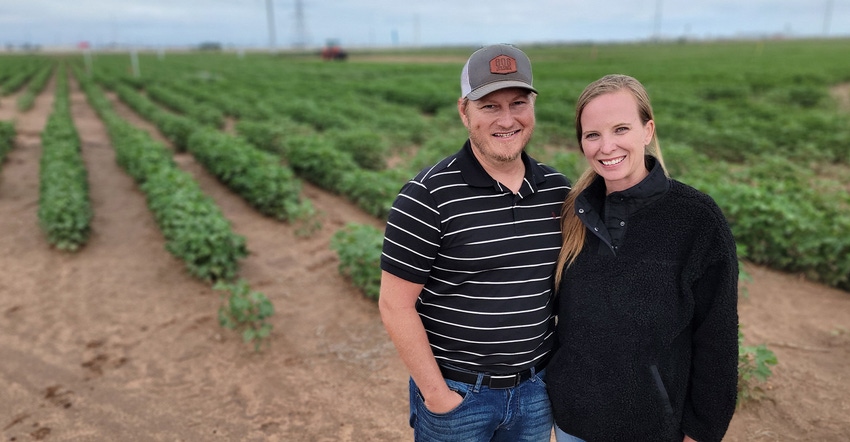
Jason and Tammy Neal knew this spring that taking their cotton crop to harvest was going to be challenging, if not impossible. A year-long drought combined with only 4 inches of rain from the end of May at planting until mid-August, left more questions than answers on their Smyer, Texas, farm.
"We did not have very much rainfall. We got just enough about planting time to get a few acres up," Jason recalls. "We ended up with a lot of our dryland cotton coming up just enough that we had to tend to it all year. But it was one of those years that as soon as soon as it came up, it pretty much quit raining.
"There was a lot of trying to figure out how far do we go? How much do we put into this year without knowing what it was going do? And then the market was so volatile and our input costs so high that there was a lot of number crunching in spreadsheets and figuring out exactly where things were going to land."
Decisions on their rented land were not easy either. "Most of our ground is rented, so trying to figure out how to keep it clean enough to keep the landlords happy but knowing that you're probably never going take that stuff to harvest."
Jason has a lot of dryland acres he won't strip. "But you still can't let the weeds go, so you have to figure out how to manage that. Lots of cultivating with the plow versus spraying that went on while waiting on the insurance agents to come take a look at it."
The Neals farm about 80% dryland cotton. Their irrigated acres rely on water from the Ogalala Aquifer. But their irrigation capacity is declining.
"We've got a lot of acres where our water is falling off. Some pivots that were full circles are going to be half pivots. We're going to have to do some more rotation and maybe not farm as many acres but the acres we do farm, make more-- cutting our acres back on our pivots to fit our water better," he says.
Jason farms on his own and with his father. "We ended up losing most of our irrigated crop because that one rain we did get came with a hailstorm. So, all of our irrigated we had planted early, got hailed out and it wound up getting the dryland up.
"It's always an interesting year," he says.
Jason estimates they will harvest only one 60-acre patch of his dad's drip-irrigated cotton. He lost his drip-irrigated acres, and the cotton in fields where he cut the pivot circles in half doesn't look good.
Outlook
Jason has been farming since he was almost big enough to reach the clutch on the tractor. "Maybe even a little bit before that. My dad might have put a wooden block on there so he could put me to work a little quicker," he says with a laugh. He's been farming on his own for about 13 years.
He says 2022 is challenging but says every year is different. "I think every year we say, 'this is the worst year ever,' but every year presents its own unique challenges. At the beginning of the year, we all said it was too dry, and it had been dry all winter, and everybody said we're not going have a cotton crop. We're still not going have a cotton crop, it just took a lot longer to get there than we thought it was going to."
Despite the challenges, he says "you have to be flexible and roll with what you get."
Tammy agrees. "It's just one of those years. Landlords have been adamant about don't spend too much money. We don't know how much is coming out the other end, so you have to be very careful and meticulous when it comes to your input costs because you don't know how much profit you'll have."
She says they've scrutinized decisions such as whether to spray or to cultivate and spend money on diesel.
"We've done a lot more cultivating just because it's going to work," Jason says. "If you run that plow through there, you're going to get the weeds. We've done a little spraying, but it's just been one of those years that everything is up in the air. We'll see what tomorrow holds."
Jason plans to evaluate possible crop rotations and to diversify in 2023, not have so many eggs in the cotton basket, he says.
See, Verett's wide row cotton proves less is more
"I think we'll look at rotational crops to not only put some nutrients back into our soil as an organic kind of fertilizer without having to use so much commercial fertilizer." He says he'll consider producing cheaper crops, "ones without so many input costs."
And the Neals will continue to rely on their faith. "You have to have faith and do the best you can and most likely you'll make it out on the other side," Jason says.
"And even though we might not have a crop this year," Tammy says following a rain shower at a field day, "it's a blessing we're getting rain because that's just adding to the bank for next year and hopefully, we will not be in the same situation."
About the Author(s)
You May Also Like






